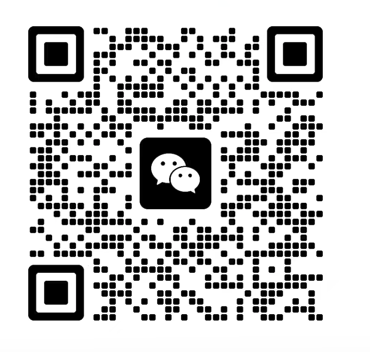The CUTR Certificate of Conformity (EAC Certificate) certification process for medical devices in the Eurasian Economic Union (EAEU) generally involves the following steps:
1. Determine product classification and applicable regulations
Product classification: First, it is necessary to determine the specific category and risk level of the medical device. The EAEU has its own classification system for medical devices, which helps to identify the appropriate regulatory requirements. For example, different classes of medical devices (such as Class I, IIa, IIb, III) may have different certification procedures and requirements, similar to the EU's medical device classification.
Identify relevant regulations: Identify the specific EAEU technical regulations (TR CU) applicable to the medical device. For medical electrical equipment, TR CU 004/2011 "On Safety of Low - Voltage Equipment" may be relevant; for electromagnetic compatibility, TR CU 020/2011 "On Electromagnetic Compatibility" may apply. In addition, there may be other specific regulations for certain types of medical devices.
2. Select a certification body
Qualified body: Select an EAEU - recognized certification body (Certification Body, CB) that has the relevant product category certification qualifications and a rich experience and technical team. The certification body is responsible for conducting the entire certification process, including document review, product testing, and factory audit (if required).
3. Prepare certification documents
Technical documentation: Prepare a series of technical documents, including product manuals, technical drawings, parts lists, circuit diagrams, test reports, quality management system documents (such as ISO 9001 certificates). These documents should prove that the product meets the technical requirements of the EAEU. For example, the product manual should be in Russian or the official languages of the EAEU member states and provide detailed information about the product's design, manufacturing, and usage.
Other documents: In addition to technical documents, other relevant documents may also be required, such as the manufacturer's business license, authorization representative agreement (if the manufacturer is not from the EAEU), and product quality assurance documents.
4. Submit the application
Fill in the application form: Fill in the application form provided by the certification body, providing detailed information about the product, manufacturer, and other relevant information.
Submit documents: Submit all prepared technical documents and the application form to the selected certification body.
5. Document review and assessment
Initial review: The certification body conducts an initial review of the submitted documents to check their completeness and compliance. If there are any deficiencies or additional information requirements, the certification body will notify the applicant to supplement or modify the documents within a specified time.
Detailed assessment: After the initial review, the certification body will conduct a more in - depth assessment of the documents, including evaluating the product's compliance with the relevant technical regulations, the effectiveness of the quality management system, and the reliability of the test reports.
6. Product testing (if necessary)
Testing requirements: According to the specific situation of the medical device, the certification body may require product testing. Testing is usually carried out in an EAEU - recognized laboratory, and the test content may include safety testing (such as electrical safety, mechanical safety), electromagnetic compatibility testing, and performance testing. For example, TR CU 004/2011 requires testing of insulation strength, grounding protection, and leakage protection for electrical medical devices; TR CU 020/2011 requires testing of electromagnetic interference and anti - interference capabilities.
Testing methods: The testing methods and standards should comply with the requirements of the relevant EAEU technical regulations.
7. Factory audit (if applicable)
Audit purpose: For some high - risk or special medical devices, the certification body may conduct a factory audit to confirm that the manufacturer's production capacity and quality management system meet the requirements. The factory audit may include on - site inspections of the production site, review of production processes, and evaluation of the quality control system.
Audit report: The certification body will compile an audit report based on the audit results, which will be used as part of the basis for the certification decision.
8. Certification decision and certificate issuance
Decision - making: Based on the results of the document review, product testing, and factory audit (if any), the certification body makes a certification decision. If the product passes all the tests and evaluations and the manufacturer's production and management system meets the requirements, the certification body will issue the CUTR Certificate of Conformity (EAC Certificate).
Certificate content: The EAC certificate usually includes information such as the product name, model, manufacturer information, applicable technical regulations, and the EAC mark. The certificate is valid for a certain period, usually 1 - 5 years, depending on the product category and certification scheme.
9. Post - certification requirements
Labeling: After obtaining the certification, the medical device must be affixed with the EAC mark on the product and/or packaging to indicate that the product has passed the conformity verification procedure under the EAEU technical regulations and has obtained the EAC certificate.
Continuous supervision: During the validity period of the certificate, the manufacturer may need to accept annual supervision and review by the certification body to ensure the continuous stability of product quality and the compliance of the production process. In addition, the EAEU member states may conduct random inspections, and the manufacturer should retain technical documents for at least 10 years.
It should be noted that the specific certification process may vary depending on the type of medical device, the certification body, and the specific requirements of the EAEU technical regulations. It is recommended that manufacturers consult with a professional certification agency to ensure a smooth certification process.
上海经合工业同时我们可以帮助企业:工程师一对一完成技术文件的编写、技术护照,安全论证,计算书,俄罗斯技术规范,专家结论,工业安全证书等,帮助企业顺利拿证辅导一步到位!
海关联盟EAC认证中心 上海经合工业设备检测有限公司 电话:021-36411293 021-36411223 地址:中国上海浦东新区高科东路777号1号楼2017 邮箱: eac@cu-tr.org gost-r@163.com skype: gostchina 手机和微信WeChat:18621862553 www.cu-tr.org www.gost.org.cn
|
二维码 公众号 |
__kindeditor_temp_url__海关联盟EAC认证中心/上海经合工业设备检测有限公司
Центр сертификации EAC Таможенного союза 沪ICP备10027014号-14
地址:上海浦东新区高科东路777号1号楼2017室 021-36411223 021-36411293 skype: gostchina
E-mail: eac@cu-tr.org 微信和手机:18621862553 海关编码查询 沪ICP备10027014号-3
网站内容和图片版权所有,未经允许,不得转载复制拷贝和使用 海关编码







